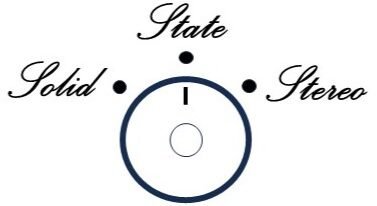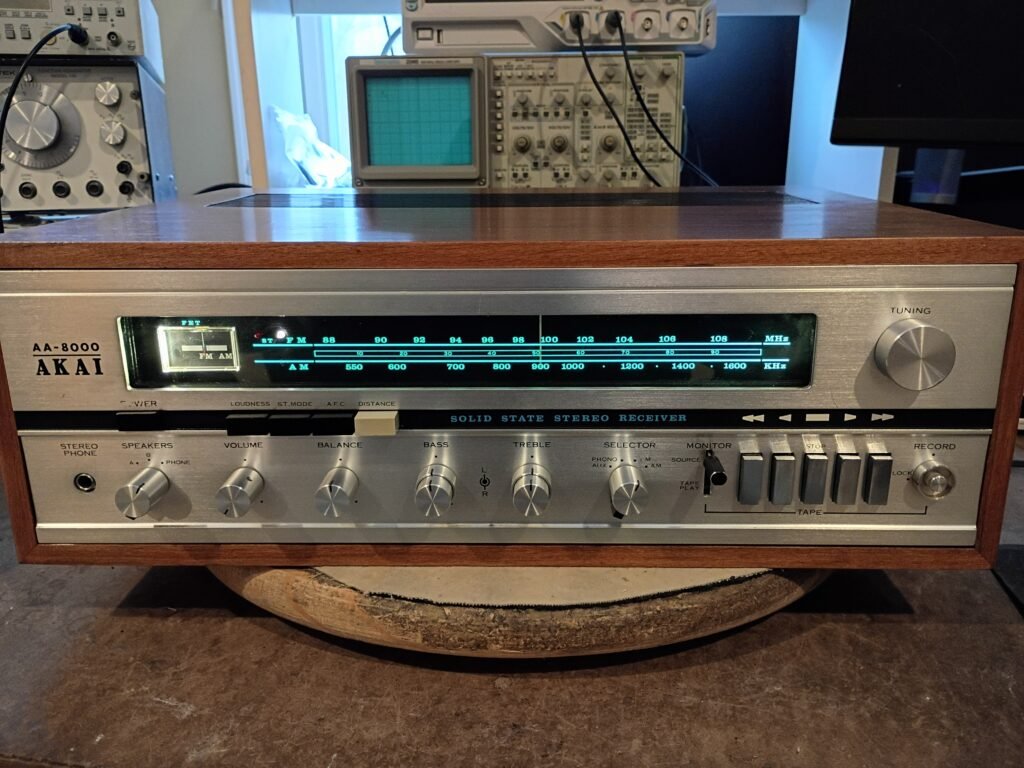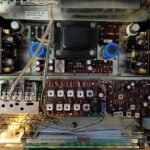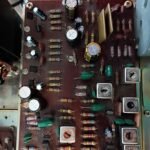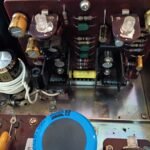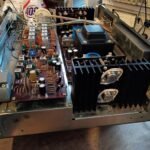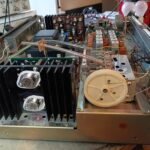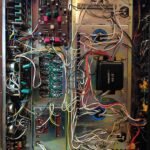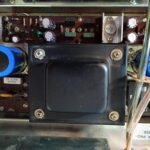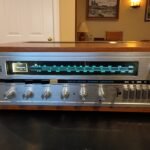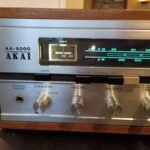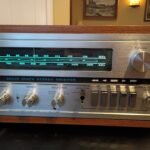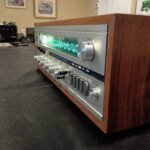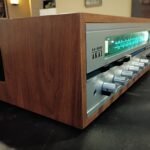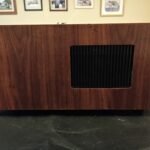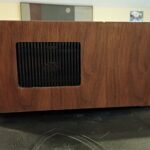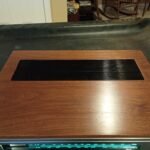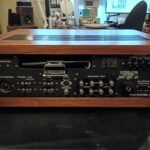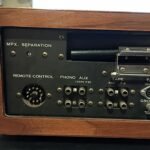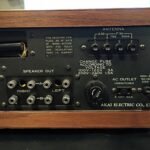Restoration notes
Beyond the list of standard restoration steps detailed on the main page, here are some added notes for this unit :
I purchased this on ebay. It “powered on” and the exterior condition was pretty good.
I am increasingly attracted to more unusual vintage audio gear like this 1972 offering from Akai.
Akai first made its name in the US for their excellent reel-to-reel decks. Just like Bose and KLH, Akai decided to design a receiver to compliment their main product, so the AA8000 has the quite unusual inclusion of tape deck control buttons (lower left of faceplate). These are tied to a proprietary connector in the back that could be cabled to a compatible Akai deck to allow the user to remotely control the tape deck from the AA8000. Given how rare these receivers are, I don’t think this experiment was too successful from a sales perspective.
The build quality of the AA8000 is very good. The wood cabinet is quite nice, and the internal architecture features separate, cap-coupled left and right amp assemblies with beefy heatsinks. The faceplate is solid aluminum as are all the knobs.
Initial inspection noted a few issues
AC line voltage incorrectly set to 110V (changed to 120V)
Mismatched output transistors (replaced all 4 with matched devices)
Speaker A terminals were phone jacks (replaced with 3-ways similar to those on Speaker B)
Initial listening tests revealed that the right channel was “dead”. I tracked this down to a broken resistor on the tone amp board (new one installed and both channels working). Scope testing then showed that the right channel was misbehaving above 10,000 Hz. As noted above, the right channel had replacement output devices which I discovered were FETs rather than transistors (!) I can only assume the previous tech put in what was “on hand” despite being incorrect. Installing 4 new, matched output transistors resolved the right channels issues (left and right now tracking nicely). I also decided to up-cap the main amplifier supply (from ~2500uF to 4,000 uF) and improve low end performance by using 2200uF Nichicon GoldTune output caps vs standard 1000uF.
The FM tuner needed adjustments and the stereo presentation is now very good for fairly strong stations. Sensitivity is only “fair”, and I failed to get the FM stereo lamp working correctly. Repeating that FM tuner does deliver stereo reception – I just can’t get the peripheral circuit responsible for lighting the lamp to behave. Note that the “Distance” button switch should always be pushed in (“on”) unless tuning in a very strong FM signal (BTW – it really is supposed to be light gray – no idea why not black like the rest…)
Functional testing complete/passed. I could not test the tape deck controls (which I suspect is a “don’t care” for most folks).
Cosmetics are very good overall. The cabinet was rather scratched up, so I carefully sanded it down and refinished it (with a nice result, IMHO). The faceplate has faded/missing lettering (see Power and Selector switches in photos). Based on what I see on line, this looks to be a common issue (some look much worse). The Monitor switch knob was missing (should be a rectangular bit of plastic) and replacements are not available. The photos show my use of an Optonica toggle switch knob.
Bench measurements
The Akai spec for this amplifier is typical for the early 70s by only quoting distortion at 1,000 Hz (0.3% at 45 watts). I will assume this is with both channels driving 8 ohms, though not stated…) Distortion for these cap-coupled is always higher when going down to 20Hz, so only quoting at 1,000 Hz makes for better numbers…
As usual, I bench tested from 20 to 20,000 Hz (both channels driving 8 ohms) and this AA8000 reached 40 watts per channel without clipping. My modest up-capping of the main amplifier supply and doubling the left/right output caps helped achieve this result.
